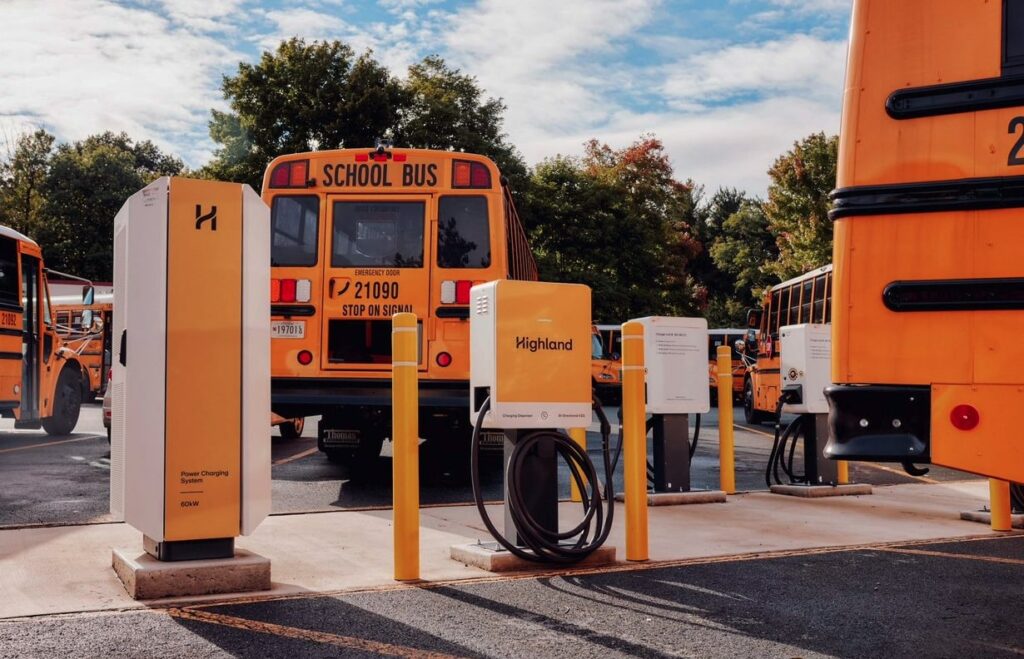
Electric vehicles are batteries on wheels, and often with quite large batteries too. Bidirectional EV charging means vehicle-to-grid (V2G) and vehicle-to-building (V2B), which come under vehicle-to-everything (V2X), are technologically feasible.
But barriers to adoption include manufacturer warranties and customer acquisition. Cameron Murray meets three companies taking a practical approach to scaling their V2G/V2B propositions.
Enjoy 12 months of exclusive analysis
- Regular insight and analysis of the industry’s biggest developments
- In-depth interviews with the industry’s leading figures
- Annual digital subscription to the PV Tech Power journal
- Discounts on Solar Media’s portfolio of events, in-person and virtual
This is an extract of an article which appears in Vol.33 of PV Tech Power, Solar Media’s quarterly technical journal for the downstream solar industry. Every edition includes ‘Storage & Smart Power,’ a dedicated section contributed by the team at Energy-Storage.news.
SWTCH: ‘EV charging with added value’
Canada-based SWTCH provides bespoke EV charging infrastructure solutions in the consumer space, including V2G technology, but CEO Carter Li is sceptical of how far the technology can be used on a daily basis.
“End-users worry about how much their range will be reduced by daily participation,” he tells PV Tech Power.
The firm recently partnered with condo developer Tridel and e-bike and EV car share company Kite Mobility to install Canada’s first multi-residential V2G EV charger at a residential block in Toronto.
The pilot will allow the building to draw energy from EVs during demand response programmes which Li says occur in the order of 5-20 times a year, and will allow SWTCH to get around one of the main
challenges with consumer EV V2G/V2X.
The challenge is that it’s hard to rely on consumers ensuring their EVs are plugged in at the right time, and the solution in this project’s case is that the vehicles are shared amongst building residents with a reservation system. SWTCH can ensure vehicles are not reservable when the power is going to be needed.
The Mobility House: ‘Vehicle-to-building resiliency’
As discussed previously by Energy-Storage.news, buses are a great use case for V2G and V2X. A project in the city of Oakland in California, US, will see stored energy from AC Transit’s electric buses provide backup power to the West Oakland Branch of the Oakland Public Library. The facility will be a safe space for the Oakland community during public safety power shutoffs (PSPSs) and rolling blackouts.
The California Energy Commission-funded project aims to demonstrate the value of bidirectional EV charging to create a ‘vehicle-to-building (V2B) resilience hub’. Germany-headquartered firm The
Mobility House will provide its ChargePilot software to optimise the project, which will be up and running by mid-2023 and will run for two years.
The Oakland project uses public transit buses instead and, while these are at an earlier stage of V2G/V2X adoption than school buses, but this should grow in the coming years, says Sarah Woogen, The Mobility House’s Head of USA Operations & Analytics.
“Public transit is not talked about as often but we’re going to prove that out with projects like these. Though they run a lot more than school buses, they have enough dwell time that they could provide
V2G/V2X. And their batteries are even larger, 1.5-2x bigger than school buses’, so there are opportunities for these fleets to be making revenues this way,” she adds.
Highland Electric Fleets: ‘Electric school buses as energy assets’
Massachusetts-based Highland Electric Fleets is one of those companies capitalising on school buses’ unique potential for V2G/X. The firm offers school bus electrification solutions under an annual
mileage payment, into which it wraps V2G functionality, for which it currently works with aggregation partners to manage.
“School bus lives are predictable and so can be used as energy assets for the grid really effectively,” explains Sean Leach, the firm’s director of technology and platform management. “And the grid’s need is highest in summer when the buses are doing nothing most of the time. We can have the bus participate in those grid programmes which then keeps the contract cost with the end-user as low as possible.”
The main V2G use case of Highland’s fleet of electric buses is to provide energy to the grid for peak events. This is where grid operators will specify in advance a specific time period of the day, which
normally comes well after the school home run, in which it wants the firm to discharge the bus batteries.
The firm has had its electric buses active in commercial V2G for two years during which it has discharged around 10MWh back to the grid, Leach said.
The company today has around 20MWh of energy storage capacity available through around 100 V2G-enabled buses on the road (as of November 2022).
Energy-Storage.news’ publisher Solar Media will host the eighth annual Energy Storage Summit EU in London, 22-23 February 2023. This year it is moving to a larger venue, bringing together Europe’s leading investors, policymakers, developers, utilities, energy buyers and service providers all in one place. Visit the official site for more info.
A few weeks later comes the 5th Energy Storage Summit USA, 28-29 March 2023 in Austin, Texas, also put on by Solar Media. Featuring a packed programme of panels, presentations and fireside chats from industry leaders focusing on accelerating the market for energy storage across the country. For more information, go to the website.

